Spanish River
(June 16th -21st -1984)
(June 16th -21st -1984)
 "At times on quiet waters one does not speak aloud but only in whispers, for then all noise is sacrilege. "
"At times on quiet waters one does not speak aloud but only in whispers, for then all noise is sacrilege. "Sigurd F. Olson

 Brian!!, is that what I think it is?? There, up ahead, and coming at us fast! A quick lane change averted disaster as we sped past the bow of a large cabin cruiser seemingly docked in the center lane of Hwy 401. Moments earlier the large watercraft had broken free of it’s trailer and was now resting, as if on showroom display, under the roadside floodlights of Canada’s busiest freeway. Already too far down the highway to offer assistance we continued driving, realizing that only the sparse traffic of these early morning hours prevented a tragedy of unimaginable proportions.
Brian!!, is that what I think it is?? There, up ahead, and coming at us fast! A quick lane change averted disaster as we sped past the bow of a large cabin cruiser seemingly docked in the center lane of Hwy 401. Moments earlier the large watercraft had broken free of it’s trailer and was now resting, as if on showroom display, under the roadside floodlights of Canada’s busiest freeway. Already too far down the highway to offer assistance we continued driving, realizing that only the sparse traffic of these early morning hours prevented a tragedy of unimaginable proportions. Far too restless for sleep, we had finished packing the car and headed off in darkness for the town of Tobermory. Catching a short nap in the parking lot, our car waited in queue to be devoured by the Chi-Cheemaun. With it’s massive bow raised overhead like enormous jaws, the car ferry’s ravenous appetite for vehicles appeared to be insatiable. The Chi-Cheemaun (or rather chi-jiimaan) meaning ‘big canoe’ in Ojibwe, seemed a rather appropriate alternative in avoiding the lengthy circuitous land routes to the town of Espanola on Lake Huron’s north shore.
Far too restless for sleep, we had finished packing the car and headed off in darkness for the town of Tobermory. Catching a short nap in the parking lot, our car waited in queue to be devoured by the Chi-Cheemaun. With it’s massive bow raised overhead like enormous jaws, the car ferry’s ravenous appetite for vehicles appeared to be insatiable. The Chi-Cheemaun (or rather chi-jiimaan) meaning ‘big canoe’ in Ojibwe, seemed a rather appropriate alternative in avoiding the lengthy circuitous land routes to the town of Espanola on Lake Huron’s north shore.Much like the Mississagi River, Spanish River finds it’s source in the headwaters around Biscotasing, passing through some of the world’s oldest red and white pine forests on it’s journey to Georgian Bay. The river’s name originates from tales of astonished European explorers claiming to have encountered Spanish speaking natives. Legend has it that the indigenous Ojibway had captured a Spanish woman who taught them the language after being assimilated into the tribe. The river served as a route to the interior for both the fur trade and later the logging industry.
 A mile (1.6km) removed from Hwy 144, we arrived at our Duke Lake jump-off site to discover we had company. An elderly gentleman and his son were engaged in a losing battle to free a boat trailer mired in the muddy shore. Driving home the last tent peg, Brian and I strolled down to offer our assistance. With our combined pushing, pulling, grunting and swearing we were finally able to inch the trailer free. Stooped over, dad huffed and puffed as he wiped the sweat from his brow and offered his thanks with an unsteady handshake. It was later that evening that a scrap of paper blew into our camp bearing the gentleman’s name and his highly elevated triglyceride levels. Good lord, we could have had a medical crisis on our hands!
A mile (1.6km) removed from Hwy 144, we arrived at our Duke Lake jump-off site to discover we had company. An elderly gentleman and his son were engaged in a losing battle to free a boat trailer mired in the muddy shore. Driving home the last tent peg, Brian and I strolled down to offer our assistance. With our combined pushing, pulling, grunting and swearing we were finally able to inch the trailer free. Stooped over, dad huffed and puffed as he wiped the sweat from his brow and offered his thanks with an unsteady handshake. It was later that evening that a scrap of paper blew into our camp bearing the gentleman’s name and his highly elevated triglyceride levels. Good lord, we could have had a medical crisis on our hands! The eastern Spanish River route offers a varied canoeing experience. Starting from Duke Lake, the topographical maps display the upper route as a series of narrow lakes numbered Tenth through First, which like watery pearls are found threaded on a string of river rapids. The combination offered the best of both worlds - numerous rapids of varying difficulty guaranteed to raise the adrenaline as well as tranquil lakes on which to relax and enjoy the stunning scenery.
The eastern Spanish River route offers a varied canoeing experience. Starting from Duke Lake, the topographical maps display the upper route as a series of narrow lakes numbered Tenth through First, which like watery pearls are found threaded on a string of river rapids. The combination offered the best of both worlds - numerous rapids of varying difficulty guaranteed to raise the adrenaline as well as tranquil lakes on which to relax and enjoy the stunning scenery.In stark contrast to our Mississagi River excursion where two additional canoes brimming with boisterous companions scattered frightened fauna far from their riparian surroundings, here signs of wildlife were abundant. Cormorants & osprey were frequently sighted keeping their airy vigil. A solitary black bear ambled through camp one damp morning while on another occasion we came upon a moose eyeing us with sleepy curiosity as it munched riverside reeds and rushes. Jumbles of interwoven sticks & branches were evidence of industrious beavers.
 Spanish River solitude was an ideal canvas on which to paint one’s thoughts and emotions. Tripping these waters flooded one’s psyche with tranquility as life’s anxieties, and problems drifted away. Here, where silence could be broken by a single droplet finding it’s rippling river home from a suspended paddle blade. Quietude, not polluted by the spoken word as Brian and I often relied on intuition for course corrections and could converse as much with a subtle head gesture than through verbal language. Hours would often pass without a word uttered.
Spanish River solitude was an ideal canvas on which to paint one’s thoughts and emotions. Tripping these waters flooded one’s psyche with tranquility as life’s anxieties, and problems drifted away. Here, where silence could be broken by a single droplet finding it’s rippling river home from a suspended paddle blade. Quietude, not polluted by the spoken word as Brian and I often relied on intuition for course corrections and could converse as much with a subtle head gesture than through verbal language. Hours would often pass without a word uttered.Wilderness was it’s own drug, tranquilizing even the most hurried soul.
 The numbered lakes nestled between stands of ancient red and white pines were pleasantly traversed in just over a day. Campsites could easily be found amongst the pines, birches and odd silver maple. Off to the west, the Snake River emptied into First Lake before it narrowed to offer some 1.6 km (1 mi) of rapids as the Spanish approached Expanse Lake.
The numbered lakes nestled between stands of ancient red and white pines were pleasantly traversed in just over a day. Campsites could easily be found amongst the pines, birches and odd silver maple. Off to the west, the Snake River emptied into First Lake before it narrowed to offer some 1.6 km (1 mi) of rapids as the Spanish approached Expanse Lake. The tranquil paddle which followed had us searching for a campsite at the southern end of Expanse where a promising point of land persuaded us to land. To our surprise, hidden amongst the ferns, reeds and saplings stood a weathered cabin. The door moaned in agony as it resisted our attempt to enter. Inside, shafts of light projected through grimy window panes, pierced the musty darkness. Pale trapezoids danced on dusty floor planks as the breeze swayed the trees outside.
The tranquil paddle which followed had us searching for a campsite at the southern end of Expanse where a promising point of land persuaded us to land. To our surprise, hidden amongst the ferns, reeds and saplings stood a weathered cabin. The door moaned in agony as it resisted our attempt to enter. Inside, shafts of light projected through grimy window panes, pierced the musty darkness. Pale trapezoids danced on dusty floor planks as the breeze swayed the trees outside.“I think this time
That was the best time that we two had ever known
We tried the handle of the house upon the shore and found the open door
Once inside we found a curious moonbeam doing dances on the floor
We were only playing like two children who had stayed away from school
Two of us could not be wrong
Heaven knows who keeps the golden rule” (1)
That was the best time that we two had ever known
We tried the handle of the house upon the shore and found the open door
Once inside we found a curious moonbeam doing dances on the floor
We were only playing like two children who had stayed away from school
Two of us could not be wrong
Heaven knows who keeps the golden rule” (1)
Nevertheless, we swept out the cobwebs & dust, restored some order to fallen items that littered the floor and finally unfurled our sleeping bags on the bunk frames within. Cobwebs and dust?……. I found my mind drifting off once again….
“Cobwebs and dust, cobwebs and dust
I hate to leave you but leave you I must
Float through the sky, float through the sky
We been too long together, my cobwebs and I” (2)
I hate to leave you but leave you I must
Float through the sky, float through the sky
We been too long together, my cobwebs and I” (2)
Inescapable! Although Brian occupied the second canoe seat, Gordon Lightfoot was my other companion, tagging along on these voyages to offer a soundtrack for whatever activity I found myself engaged.
Darkness quickly enveloped our rickety shanty nestled in the woods. Lantern extinguished, we looked forward to a pleasant sleep that only a flat surface could offer.
Bang!, Thump! Crash!,………… shuffle, shuffle, shuffle….
The invasion had begun. Mice!….countless mice! Scurrying about displacing our re-shelved items back to various floor locations they thought more appropriate. A flashlight beam would occasionally catch one of the little critters, paws raised, beady eyes in frozen stare as if to mockingly exclaim “What?!!” Ignoring the racket was one thing but it was quite another to turn my back on the commotion in fear of squashing ‘Mickey’ or his friends as they scurried up and down my sleeping bag. Now was the appropriate time to use all that language I had stowed during the preceding day however the expletives that flowed would have embarrassed even the most hardened street thug.
Our rodent infestation retreated with the advancing sunrise. Bleary-eyed, I shook out the last captive straggler peering back at me from the bottom of my tin mug and exchanged him for some steaming coffee. While packing, we were sure to shake out our belongings lest we bring some of the varmints along for a repeat performance us at our next camp.
Pushing off we departed the last in the series of lakes for the shallow swifts between Expanse Lake and ‘The Forks’ where east and west branches of the Spanish River join forces some two kilometre’s down stream. The mournful wail of a distant train whistle would occasionally be heard piercing the west bank fog. Rapids found some 2.5km (1.5mi) further downstream were run after a quick scouting. Some 3.2km (2mi) past the inland whistle-stop of Fluorite, the rail lines traded the west bank for the east as they crossed a rusty iron bridge spanning the river.
 Lumbering trains would occasionally be spotted ferrying colourful boxcars and loaded flatbeds to distant provinces. Passing the next whistle-stop, Sheehan (~1.2km or 0.75mi) bought us to yet another called Pogamasing (~4.8km or 3mi) which appeared to consist of nothing more than a metal tool shed perched along a granite swath cut into the rising riverside cliffs. Etched in my memory is an unidentifiable mechanical drone which continuously resonated along the granite walls though no human activity was observed. Pogamasing left me with an irrational eerie feeling as we passed this deserted stretch of railway line.
Lumbering trains would occasionally be spotted ferrying colourful boxcars and loaded flatbeds to distant provinces. Passing the next whistle-stop, Sheehan (~1.2km or 0.75mi) bought us to yet another called Pogamasing (~4.8km or 3mi) which appeared to consist of nothing more than a metal tool shed perched along a granite swath cut into the rising riverside cliffs. Etched in my memory is an unidentifiable mechanical drone which continuously resonated along the granite walls though no human activity was observed. Pogamasing left me with an irrational eerie feeling as we passed this deserted stretch of railway line. Railroad tracks below granite cliffs rising above the Spanish River at Pogamasing
Railroad tracks below granite cliffs rising above the Spanish River at Pogamasing(East bank looking back upstream)
 With another 5km (3mi) of river behind us we pitched camp on the west bank near some gravel bars just as the sky began to drizzle. While ‘tourists’ may run for cover, I find these rainy, overcast days refreshingly enjoyable. Lazing about over steaming mugs of coffee, Brian & I found that we could solve the world’s most challenging problems though somehow they continued to confound, baffle and elude seasoned career politicians.
With another 5km (3mi) of river behind us we pitched camp on the west bank near some gravel bars just as the sky began to drizzle. While ‘tourists’ may run for cover, I find these rainy, overcast days refreshingly enjoyable. Lazing about over steaming mugs of coffee, Brian & I found that we could solve the world’s most challenging problems though somehow they continued to confound, baffle and elude seasoned career politicians. The headlands above Spanish Lake offered a fine view of the river valley below. Here, hidden high above the river we found yet another cabin however this one was reinforced, fortified barricaded and locked, as if expecting the ‘Spanish Inquisition’ rather than some weary wayfaring Spanish River voyager. Devouring a quick lunch, we continued downstream to Zig-Zag Rapids which we ran along the left bank where, avoiding boulders and haystacks, our descent ended with an eddy turn into the boiling pool below. Numerous swifts and rapids followed as we approached ‘The Elbow’ where the river’s southerly course takes a rather abrupt turn to the northwest before reaching Graveyard Rapids. The rather ominous name of Graveyard Rapids was earned during the Spanish River’s logging days as both wayward logs and distracted loggers earned their final resting place along this hazardous stretch.
The headlands above Spanish Lake offered a fine view of the river valley below. Here, hidden high above the river we found yet another cabin however this one was reinforced, fortified barricaded and locked, as if expecting the ‘Spanish Inquisition’ rather than some weary wayfaring Spanish River voyager. Devouring a quick lunch, we continued downstream to Zig-Zag Rapids which we ran along the left bank where, avoiding boulders and haystacks, our descent ended with an eddy turn into the boiling pool below. Numerous swifts and rapids followed as we approached ‘The Elbow’ where the river’s southerly course takes a rather abrupt turn to the northwest before reaching Graveyard Rapids. The rather ominous name of Graveyard Rapids was earned during the Spanish River’s logging days as both wayward logs and distracted loggers earned their final resting place along this hazardous stretch.(See Map of Graveyard Rapids at end of this Tale)
 Running the upper portion of the Little Graveyard rapids (R-1), we pulled for the right shore where the canoe was lined over a rather extensive ledge extending across the river. Having chased the descending sun as far as Big Graveyard rapids (R-2), we became increasingly apprehensive over the whitewater challenge which was sure to follow. Rather than go ‘whistling past the graveyards’, this haunting piece of riverside real estate became home for the night. Under the twilight roar of the rapids we conjured up a bottle of Canadian Club rye whiskey and entertained spirits of a different variety that evening. Camp chores completed Brian and I stretched out by our dying campfire and chatted until darkness enveloped us.
Running the upper portion of the Little Graveyard rapids (R-1), we pulled for the right shore where the canoe was lined over a rather extensive ledge extending across the river. Having chased the descending sun as far as Big Graveyard rapids (R-2), we became increasingly apprehensive over the whitewater challenge which was sure to follow. Rather than go ‘whistling past the graveyards’, this haunting piece of riverside real estate became home for the night. Under the twilight roar of the rapids we conjured up a bottle of Canadian Club rye whiskey and entertained spirits of a different variety that evening. Camp chores completed Brian and I stretched out by our dying campfire and chatted until darkness enveloped us. Daylight resurrected, we hauled our packs to the end of the portage and ran the Big Graveyards with our empty canoe. A graveyard not only to logs and lumberjacks as the fragmented remains of several canoes littering the shore testified. The Cascades (R-3-5) followed which for the most part could be run empty after a careful scouting. As the river ‘switchback’ was reaching it’s most northerly apex, the Agnes Rapids (R-6) were encountered just past where the Agnes River enters the Spanish. Although the most technically challenging, these rapids could once again be run with an empty canoe. As a reward for surviving the Graveyards, the Spanish offered up a final stretch of white water known as Cedar Rapids. This final hurrah was an exhilarating 1 km (0.6 mi) swift and shallow run as the Spanish rounded a bend to resume it’s southerly course.
Daylight resurrected, we hauled our packs to the end of the portage and ran the Big Graveyards with our empty canoe. A graveyard not only to logs and lumberjacks as the fragmented remains of several canoes littering the shore testified. The Cascades (R-3-5) followed which for the most part could be run empty after a careful scouting. As the river ‘switchback’ was reaching it’s most northerly apex, the Agnes Rapids (R-6) were encountered just past where the Agnes River enters the Spanish. Although the most technically challenging, these rapids could once again be run with an empty canoe. As a reward for surviving the Graveyards, the Spanish offered up a final stretch of white water known as Cedar Rapids. This final hurrah was an exhilarating 1 km (0.6 mi) swift and shallow run as the Spanish rounded a bend to resume it’s southerly course.


 A pleasant 40 km (25 mi) paddle followed in which to come to terms with our looming return to civilization. Our final night was spent on the banks of Lake Agnew where the hollow song of a lone Whip-Poor-Will echoed along the darkening shoreline. Like a curtain falling on the final act of a memorable performance the sun descended and offered us a breathtaking sunset for an encore. Finding it difficult to surrender the Spanish, we once again chatted long into the night as the glowing embers faded.
A pleasant 40 km (25 mi) paddle followed in which to come to terms with our looming return to civilization. Our final night was spent on the banks of Lake Agnew where the hollow song of a lone Whip-Poor-Will echoed along the darkening shoreline. Like a curtain falling on the final act of a memorable performance the sun descended and offered us a breathtaking sunset for an encore. Finding it difficult to surrender the Spanish, we once again chatted long into the night as the glowing embers faded.
 Manicured lakefront cottages and subsequent motorized water traffic became increasingly prevalent as we paddled the western shore of Agnew Lake. A large cabin cruiser motored by, leaving our diminutive Grumman bobbing in it’s wake. Such a craft was certainly more majestic parting the sparkling lake waters rather than docked in the center lane of an asphalt highway. Arriving at Agnew Lake Lodge, we hauled our canoe from the Spanish one last time and under the noonday sun went off in search of a cold & frosty cola.
Manicured lakefront cottages and subsequent motorized water traffic became increasingly prevalent as we paddled the western shore of Agnew Lake. A large cabin cruiser motored by, leaving our diminutive Grumman bobbing in it’s wake. Such a craft was certainly more majestic parting the sparkling lake waters rather than docked in the center lane of an asphalt highway. Arriving at Agnew Lake Lodge, we hauled our canoe from the Spanish one last time and under the noonday sun went off in search of a cold & frosty cola. -As usual, I had two companions on my trip, Brian & Gordon Lightfoot.
-As usual, I had two companions on my trip, Brian & Gordon Lightfoot.(1) ‘Now & Then’ - Gordon Lightfoot (Cold On The Shoulder - 1975)
(2) ‘Cobwebs & Dust’ - Gordon Lightfoot (Sit Down Young Stranger - 1970)
 ___________________________________________________
______________________________________________________________________________________________________
Slide Show Of My 1984 Spanish River Canoe Trip
 Roadmap Indicating Locations of Spanish & Mississagi Rivers
Roadmap Indicating Locations of Spanish & Mississagi Rivers
(Click to Enlarge)
Google Earth Co-ordinates: Roadmap Indicating Locations of Spanish & Mississagi Rivers
Roadmap Indicating Locations of Spanish & Mississagi Rivers(Click to Enlarge)
(cut and paste everything after the dash- (in red) into Google Earth search bar.
Duke Lake - Jump-off Location
Lat/Long- 47°23’13.03” N, 81° 51’07.27” W
Pogamasing ON
Lat/Long- 46° 55’00.02” N, 81° 46’00.01” W
Graveyard Rapids Set
Lat/Long- 46° 39’00.48” N, 81° 44’56.11” W
Agnew Lake - Takeout Location
Lat/Long- 46° 20’57.26” N, 81° 52’15.73” W
© Copyright - All rights reserved.




















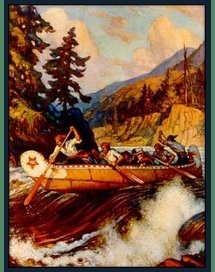














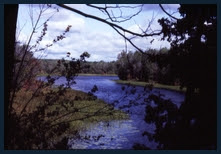




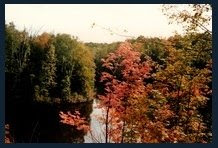














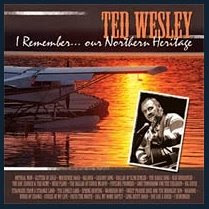

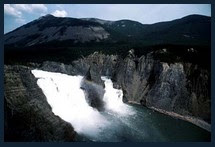
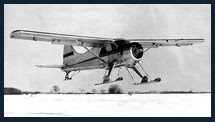













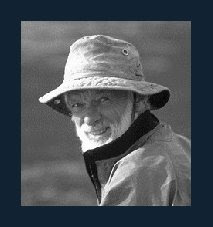



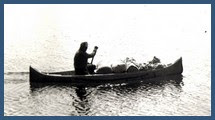





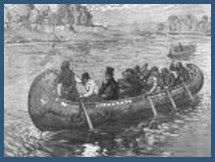

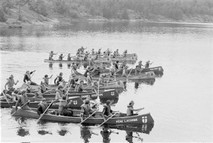

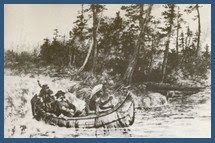
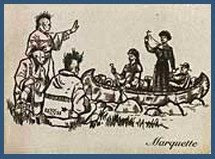

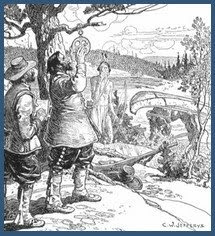


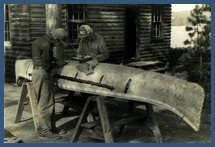





















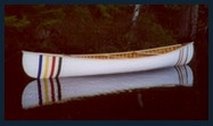































No comments:
Post a Comment